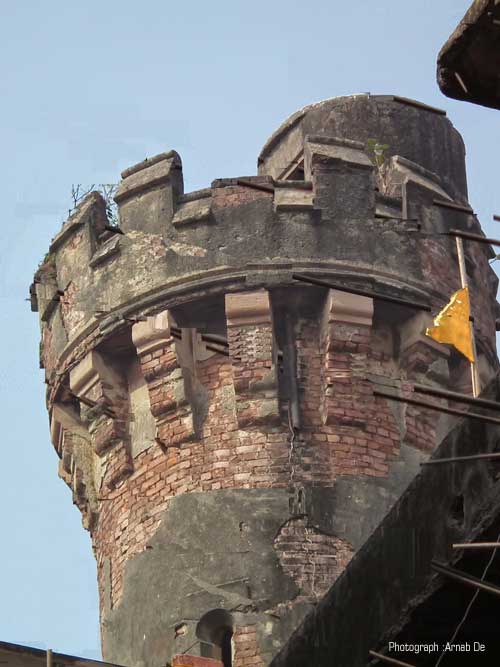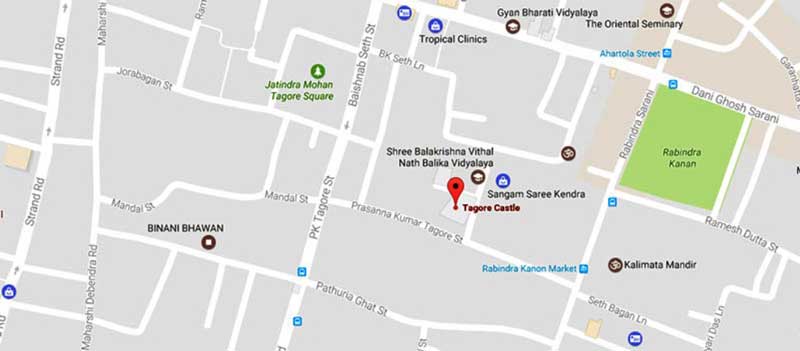
The Tagore or Thakur family has a long history of over three hundred years. Once they were one of the leading families of Calcutta and played a key role during the Bengal Renaissance. Originally, they were Bengali ‘Rarhy’ Brahmins (Kushari) of ‘Shandilya Gotra’, who migrated from Khulna, in the eastern part of Bengal, now in Bangladesh in the 18th century and settled on the right bank of river Hooghly. In the orthodox Brahmin society, they were branded as ‘Pirali Brahmins’, as they were connected to a Brahmin family, which had converted to Islam due to some unavoidable circumstances. The term ‘Pirali’ is linked to one Mohammad Tahir Pir Ali, who was originally a Hindu Brahmin and served under a Muslim governor of Jessore. He had to embrace Islam under pressure and his action ultimately resulted in the additional conversion of his two other Brahmins brothers also. The orthodox Hindu society could not take it easy and they shunned his all other Hindu relatives, including those, who had not converted. The descendants of these Hindu relatives came be known as the Pirali Brahmins and the Thakurs were one among them.
Among the socially ostracized families, Panchanan Kushari was the first person to migrate from Jessore with his brother Sukdeb and settled near the River Hoogly, in the former Gobindapur area. As they started their new life as a ‘pujari’or a priest in a nearby temple, the locals started to call them ‘thakur’, which means a priest or a worshipper. Later, this was changed to ‘tagore’ by the Europeans. Nevertheless, Panchanan Thakur’s son Joyram became an ‘Amin’, a sort of collector and eventually purchased a plot of land near the erstwhile fort area. However, as the British wanted to vacate the area, they paid a handsome of money to Joyram as compensation and Joyram, happy with the amount of money, shifted to Pathuriaghat and that started the story of the Tagore family.

Joyram had two sons, Darpanarayan and Nilmoni. Later, due to a dispute between the two brothers over the family property, Nilmoni left Pathuriaghata and shifted to an area in Mechuabazar, which later came to be known as Jorasanko, while Darpanarayan stayed in Paturiaghata, in the first house where Joyram originally settled. That house is now located in a narrow lane, known as Raghunandan Lane, around ten minutes away from Prasanna Kumar Tagore Street. This separation of the family occurred in around 1760 and thus the Tagore family was bifurcated.
One of the sons of Darpanarayan, Gopi Mohan Tagore (1760-1819), was one of the founders of Hindu College. He decided to leave the original home (Adi Bari) of the family and settle in an area near Notun Bazaar in Pathuriaghata Street. Apart from a daughter, Gopi Mohan had six sons, Surji Kumar, Chandra Kumar, Nanda Kumar, Kali Kumar, Hara Kumar and Prasanna Coomar.
Among the brothers, Kali Kumar Tagore built a massive mansion in Naptehata in 1820, which came to be known as the ‘Tagore Palace’. He gifted it to his younger brother Prasanna Coomar and gradually, with the passing of time, Naptehata became ‘Prasanna Kumar Tagore Street’. Today, Tagore Palace occupies house numbers 13, 13A and 13 B of this street. However, Prasanna Coomar disowned and disinherited his son Gnanendra Mohan, as he married Kamalmani, daughter of Reverend Krishna Mohan Banerjee and was converted to Christianity. Consequently, son of Hara Kumar Tagore, Maharaja Sir Jatindra Mohan Tagore inherited the property from his uncle, Prasanna Coomar. Jatindra Mohan was a man of novel ideas and unusual visions. He engaged Macintosh Burn and constructed a strange massive building in the vicinity in 1895. Designed like an English castle, it even consisted of a 100 feet tall central tower like the Windsor castle. He even had the permission to fly the Union Jack on the tower. The majestic building was crowned with a big clock like Big Ben, imported from England. Popularly known as the Tagore Castle, this curious and extraordinary building situated at 26 Prasanna Kumar Tagore Street, is one of the most remarkable buildings of Calcutta.


The second floor of the Tagore Castle had a grand auditorium, Known as ‘Nachghar’, which was mainly meant for staging plays. Jatindra Mohan Tagore, as well as his brother Shourendra Mohan Tagore, both were sincerely devoted and ardent patrons of theatre. From time to time, they contributed substantially to the development of theatre in Calcutta. Jatindra Mohan himself was an eminent and versatile actor. The ‘Banga Natyalaya’ was established by him at Pathuriaghata, which was patronized by Rabindranath Tagore for some time. The first play that was staged at Banga Natyalaya was a Sanskrit drama, ‘Malavika-Agnimitram’, by Kalidas, in July 1859. Jatindra Mohan Tagore inspired, insisted and assured the famous Bengali poet Michael Madhusudan Dutta to write his ‘Tilottamasambhab Kabya’ and without any insistence from any quarter, took all the pain, burden and the responsibilities to print and publish it at his own cost. Even before that, Ishwar Chandra Gupta published ‘Sambad Prabhakar’, from here with the financial help of Jogendra Mohan Tagore, first as a weekly from 28 January 1831.


The building was leased to Haridas Mundra of M/S S.B. House and Land Pvt. Ltd. in 1954. They took over the building and drastically altered most of it to beyond recognition. The fate of the unique building now depends upon the verdicts of different courts, as the present owner of the dilapidated and crumbling building, Sreejit Tagore, is fighting several fierce legal battles in different courts of law to regain control over the castle. Though several hundreds of people now reside in the castle, most of them do not bother to pay any rent and as if that is not enough, most of them have made illegal constructions inside the building to suit their purpose.

